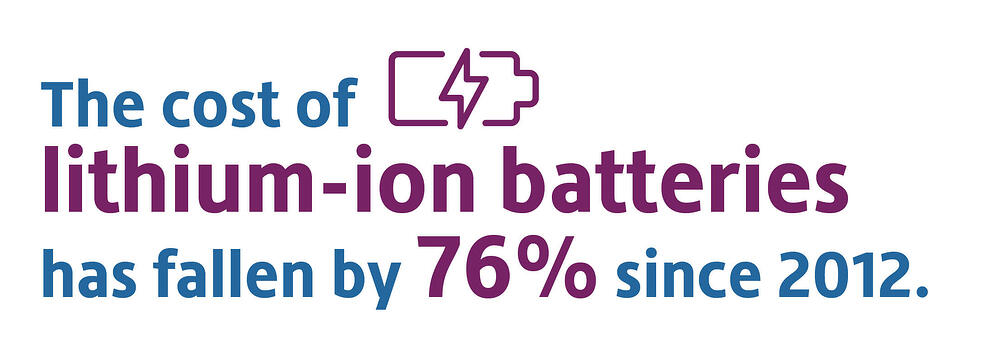The city of Los Angeles recently greenlighted a project to build the biggest solar energy plant in the U.S., which will sell solar power at record-low prices. The 400-megawatt plant, located in the Mojave desert, and scheduled to be running by 2023, combines solar panels and energy-storing batteries and is projected to satisfy 7% of the city’s electricity needs.
The bigger trend
The rapidly falling price of batteries that can store solar and wind power is making energy from renewable sources competitive on cost terms with fossil fuel-generated power.
Some details
-
Pricing for solar and energy-storage purchase power agreements (PPAs) has fallen dramatically, from 14 cents per kilowatt hour in 2015 to as low as 3 cents for some contracts in June 2018, according to a report by the Equipment Leasing & Finance Foundation (ELFF).
-
The demand for renewable projects is being driven, at least in part, by government-mandated clean energy regulations/targets. In the United States, 31 states and territories have definitive renewable targets mandated by current law. California and Hawaii, in fact, have 100% renewable energy mandates, and California is currently required to get there by 2045.

-
New York City is looking to install a 16.4 Megawatt hour (MWh) battery by 2030 to help cut emissions by limiting the use of more carbon-intensive power. This battery is designed to support the local grid of energy company Con Edison when demand hits highs.
-
An analysis of more than 7,000 global projects by Bloomberg New Energy Finance reported that the cost of lithium-ion batteries had fallen by 76% since 2012. That reduction has allowed plants that use solar or wind power generation in tandem with batteries for storage to compete effectively with fossil fuel plants.

-
"Because of growing economies of scale, prices for renewables and batteries keep coming down," says Mark Jacobson, an atmospheric scientist at Stanford University, as told to Science magazine.
Atalaya's take
Competition in maturing businesses is not new. And, in a given industry, as barriers to entry fall, existing markets and value networks become ripe for business disruption. Sometimes, such disruptions remain at the industry fringe but other times, particularly when aided by political and regulatory forces, such disruptions can be structural. Over any short period of time, the impact of disruption can be hard to identify. When stepping back, however, visibility can be radically different. We think energy storage is interesting and, as an asset class, enjoys meaningful tailwinds. But, from an investor perspective, as this vertical matures, we see a corresponding need to deepen the bench of capital providers, beyond initial investor participants such as venture, tax credit driven and strategic investors, who can support the production, adoption and surrounding infrastructure related to energy storage investments.
In this series – “Financing Innovation” – we will explore how emerging technologies and processes are changing industries in ways that may become increasingly relevant for Atalaya and the equipment leasing market. We invite and encourage engagement, learning and dialogue with market participants. We welcome hearing about the ways in which the adoption of technology is shaping your business.
CONTACT US.